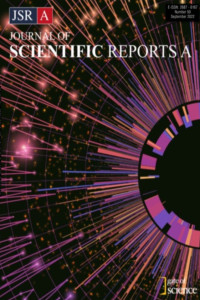Research Article
Year 2022,
Issue: 050, 32 - 43, 30.09.2022
Abstract
References
- [1] Morcalı, M. H., (2014), Nikel Sülfür Ateş Analizi Metodu ile Katalitik Konvertörlerdeki Platin, Paladyum ve Rodyum Metallerinin Tayini ve Metodun Optimizasyonu. Yüksek Lisans Tezi, İstanbul Teknik Üniversitesi, Fen Bilimleri Enstitüsü, İstanbul, 136p.
- [2] Skinner, P.E., (1989), Platinum Metals Reviews. (33),102.
- [3] Hagelüken, C., (2012), Recycling the Platinum Group Metals: A European Perspective. Platinum Metals Reviews. (56) pp. 29-35.
- [4] Cowley, A., (2021), PGM Market Report. Johnson Matthey.
- [5] Uyanık, M., (2012), Sic Nanopartikül İlaveli Asitli Çinko Kaplama Banyolarında Yapılan Kaplamaların Malzemenin Korozyon Direnci ve Mekanik Özelliklerine Etkisinin Araştırılması. Yıldız Teknik Üniversitesi, Fen Bilimleri Enstitüsü, Yüksek Lisans Tezi, İstanbul.
- [6] Giurlani, W., Zangari, G., Gambinossi, F., Passaponti, M., Salvietti, E., Benedetto, F. D., Caporali S. and Innocenti, M., (2018), Electroplating for Decorative Applications: Recent, Coatings, Vol 260, no. 8.
- [7] Bakan, E., (2011), Elektrolitik Parlak Gümüş Kaplama Banyolarının Geliştirilmesi. Yüksek Lisans Tezi, İstanbul Teknik Üniversitesi, Fen Bilimleri Enstitüsü, İstanbul. 151p.
- [8] Elektrometal Kaplamanın Temel Prensipleri, Ders 2, Elektrometal Kaplama Tekniği.
- [9] Çakar, H., (2010), Elektrokimyasal Yöntemle Üretilen Ni-B Esaslı Kaplamaların NaCl Ortamındaki Korozyonu. Yüksek Lisans Tezi, Sakarya Üniversitesi, Fen Bilimleri Enstitüsü, Sakarya. 105p.
- [10] Dikici, T., (2009), Çelik Malzeme Yüzeyine Elektrolitik Yolla Kaplanan Zn-Ni-Co Alaşımının Mekanik ve Yapısal Özelliklerinin İncelenmesi. Yüksek Lisans Tezi, Dokuz Eylül Üniversitesi, Fen Bilimleri Enstitüsü, İzmir. 125p.
- [11] Kanani, N., (2004), Elektroplating, Basic Principles, Procesesses and Practice, Elsevier Science.
- [12] Sönmez, S., (2006), Metal Kaplama Sanayi Atık Sularından Perlit Minerali ile Toplam Krom Gideriminin İncelenmesi. Yüksek Lisans Tezi, Sakarya Üniversitesi, Fen Bilimleri Enstitüsü, Sakarya. 106p.
- [13] Ellwood, W. B., ( 7 November 1961). Rhodium Plating. New York Patent: 3,007,855.
- [14] [Online]. Available: https://en.wikipedia.org/wiki/Triton_X-100. [Reached: April 2022].
- [15] [Online]. Available: https://www.lovibond.com/tr. [Reached: April 2022].
- [16] [Online]. Available: https://en.wikipedia.org/wiki/CIELAB_color_space. [Reached: April 2022].
- [17] Bangmaya, S., Sambedan, J., Siddhartha, D., Karabi, D., (2021), A comparative study of electrodeposition routes for obtaining silver coatings from a novel and environment-friendly thiosulphate-based cyanide-free electroplating bath. Surface & Coatings Technology. (424). 127680.
Year 2022,
Issue: 050, 32 - 43, 30.09.2022
Abstract
Platinum group metals are used a lot in fields such as jewellery, electronics and health due to being precious metals and their brightness, corrosion resistance, thermal resistance and electrical conductivity. With the excessive increase in the prices of gold and rhodium, which are the most used in the jewelry sector, a tendency towards the more affordable platinum metal has begun. In this study, the optimization of baths used in the jewelry industry, which is one of the areas where platinum coating is used most, is discussed. The conditions required for the re-coating of the platinum bath, which is used and separated as waste in jewelry workshops, were investigated experimentally. A waste bath was taken from a jewelry plating workshop in the Grand Bazaar, and the content of the bath was determined by ICP-OES analysis and IR Spectroscopy. Later, on this waste platinum bath, a few substances, which are used as brighteners in the market, and which show parallel diffraction with the original bath in FTIR analysis were added and the effects of temperature, current and time parameters on the coating were investigated. L*a*b values were measured with PCE Instruments Colorimeter device by making platinum coating on brass-coated plates using the waste bath to which brighteners were added. As a result of the study, the brighteners and color properties of the coated surfaces and the reference coating properties were compared.
Keywords
Thanks
We would like to thank Vigold Jewelry Industry and Trade Limited Company for all their support.
References
- [1] Morcalı, M. H., (2014), Nikel Sülfür Ateş Analizi Metodu ile Katalitik Konvertörlerdeki Platin, Paladyum ve Rodyum Metallerinin Tayini ve Metodun Optimizasyonu. Yüksek Lisans Tezi, İstanbul Teknik Üniversitesi, Fen Bilimleri Enstitüsü, İstanbul, 136p.
- [2] Skinner, P.E., (1989), Platinum Metals Reviews. (33),102.
- [3] Hagelüken, C., (2012), Recycling the Platinum Group Metals: A European Perspective. Platinum Metals Reviews. (56) pp. 29-35.
- [4] Cowley, A., (2021), PGM Market Report. Johnson Matthey.
- [5] Uyanık, M., (2012), Sic Nanopartikül İlaveli Asitli Çinko Kaplama Banyolarında Yapılan Kaplamaların Malzemenin Korozyon Direnci ve Mekanik Özelliklerine Etkisinin Araştırılması. Yıldız Teknik Üniversitesi, Fen Bilimleri Enstitüsü, Yüksek Lisans Tezi, İstanbul.
- [6] Giurlani, W., Zangari, G., Gambinossi, F., Passaponti, M., Salvietti, E., Benedetto, F. D., Caporali S. and Innocenti, M., (2018), Electroplating for Decorative Applications: Recent, Coatings, Vol 260, no. 8.
- [7] Bakan, E., (2011), Elektrolitik Parlak Gümüş Kaplama Banyolarının Geliştirilmesi. Yüksek Lisans Tezi, İstanbul Teknik Üniversitesi, Fen Bilimleri Enstitüsü, İstanbul. 151p.
- [8] Elektrometal Kaplamanın Temel Prensipleri, Ders 2, Elektrometal Kaplama Tekniği.
- [9] Çakar, H., (2010), Elektrokimyasal Yöntemle Üretilen Ni-B Esaslı Kaplamaların NaCl Ortamındaki Korozyonu. Yüksek Lisans Tezi, Sakarya Üniversitesi, Fen Bilimleri Enstitüsü, Sakarya. 105p.
- [10] Dikici, T., (2009), Çelik Malzeme Yüzeyine Elektrolitik Yolla Kaplanan Zn-Ni-Co Alaşımının Mekanik ve Yapısal Özelliklerinin İncelenmesi. Yüksek Lisans Tezi, Dokuz Eylül Üniversitesi, Fen Bilimleri Enstitüsü, İzmir. 125p.
- [11] Kanani, N., (2004), Elektroplating, Basic Principles, Procesesses and Practice, Elsevier Science.
- [12] Sönmez, S., (2006), Metal Kaplama Sanayi Atık Sularından Perlit Minerali ile Toplam Krom Gideriminin İncelenmesi. Yüksek Lisans Tezi, Sakarya Üniversitesi, Fen Bilimleri Enstitüsü, Sakarya. 106p.
- [13] Ellwood, W. B., ( 7 November 1961). Rhodium Plating. New York Patent: 3,007,855.
- [14] [Online]. Available: https://en.wikipedia.org/wiki/Triton_X-100. [Reached: April 2022].
- [15] [Online]. Available: https://www.lovibond.com/tr. [Reached: April 2022].
- [16] [Online]. Available: https://en.wikipedia.org/wiki/CIELAB_color_space. [Reached: April 2022].
- [17] Bangmaya, S., Sambedan, J., Siddhartha, D., Karabi, D., (2021), A comparative study of electrodeposition routes for obtaining silver coatings from a novel and environment-friendly thiosulphate-based cyanide-free electroplating bath. Surface & Coatings Technology. (424). 127680.
There are 17 citations in total.
Details
| Primary Language | English |
|---|---|
| Subjects | Engineering |
| Journal Section | Research Articles |
| Authors | |
| Publication Date | September 30, 2022 |
| Submission Date | May 12, 2022 |
| Published in Issue | Year 2022 Issue: 050 |

